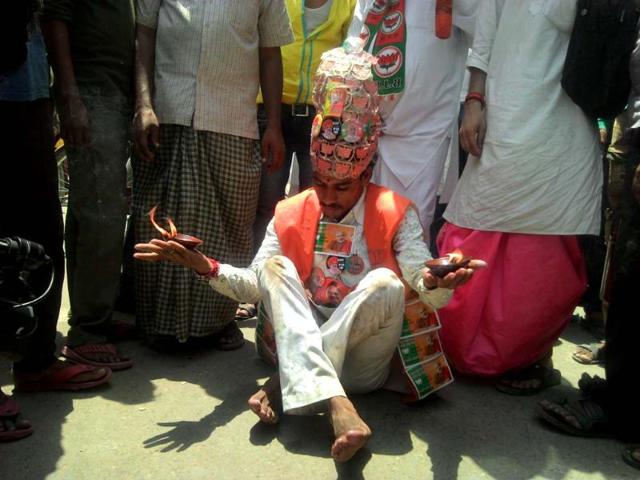18% vote share: BJP lotus blooms in TMC’s Bengal
From being a marginal player, BJP storms into West Bengal at the cost of Left Front that had ruled for 34 years.
From being a marginal player until recently, the BJP leapfrogged to the centre-stage of Bengal politics on Friday, emerging as a major force in a state swept by the ruling Trinamool Congress (TMC).

The TMC secured leads in as many as 34 out of the 42 seats but the BJP managed to increase its vote share to a significant 18% compared to a meagre 6% in the 2009 Lok Sabha polls.
However, the BJP will have to be content with just two seats for the time being.
The BJP surge came mainly at the cost of Left, the coalition that ruled Bengal for 34 years. Till last reports came in, the Left was made to grovel with marginal leads in just two seats, Murshidabad and Raiganj.
In the face of a rout in the country, the Congress was able to hold its own in the state where it was ahead in five seats. In 2009, the party had won six seats.
"We had said earlier the opposition has no agenda and that’s why they had resorted to unlimited maligning and disinformation campaign. The people of Bengal have given them a fitting reply," remarked parliamentary affairs minister and secretary general of TMC Partha Chatterjee.
The BJP state president Rahul Sinha felt that the 2014 election was a "new beginning for the party".
"According to our estimates, our vote share has crossed 18%. In many constituencies such as Kolkata South, Kolkata North, Malda South we have emerged as the second contender with the Left and other parties a distant third and fourth," Sinha added.
BJP candidate from Basirhat Samik Bhattcharyya claimed that the party would have won more seats had the "Election Commission ensured free and fair polls. Instead what happened in Bengal was muscle flexing by the ruling Trinamool Congress".
The eclipse of the Left was, perhaps, as remarkable as the rise of the BJP. In 2009, the Left’s tally was 15 seats while Trinamool had 19.
The gains of BJP were all the more impressive as even Left leaders admitted the party had no organisation in the state and could not field polling agents in about 70% of the booths.
Analysts pointed out that Bengal’s ruling party benefited from the division of anti-Trinamool votes. In other words, the votes BJP bagged came more from the Left and Congress rather than from the ruling party, as the Left had hoped before the polls.
During the high-decibel campaign, BJP leaders devoted unprecedented time and resources to Bengal. Its prime minister-designate Narendra Modi visited the state as many as five times and addressed eight rallies, spicing up a campaign that was otherwise proceeding on the predictable lines of chief minister Mamata Banerjee criticising her earlier ally Congress, and perennial rival, the Left.
For Mamata Banerjee, the sweep might not bring much cheer as her principal target was to emerge as a kingmaker in Delhi.
Getting a toehold in the Centre was crucial for her in the light of the CBI investigation into the Saradha scam, in which some of her leaders seem to be involved, and to wrest some fiscal relief package for her debt-stressed state.





